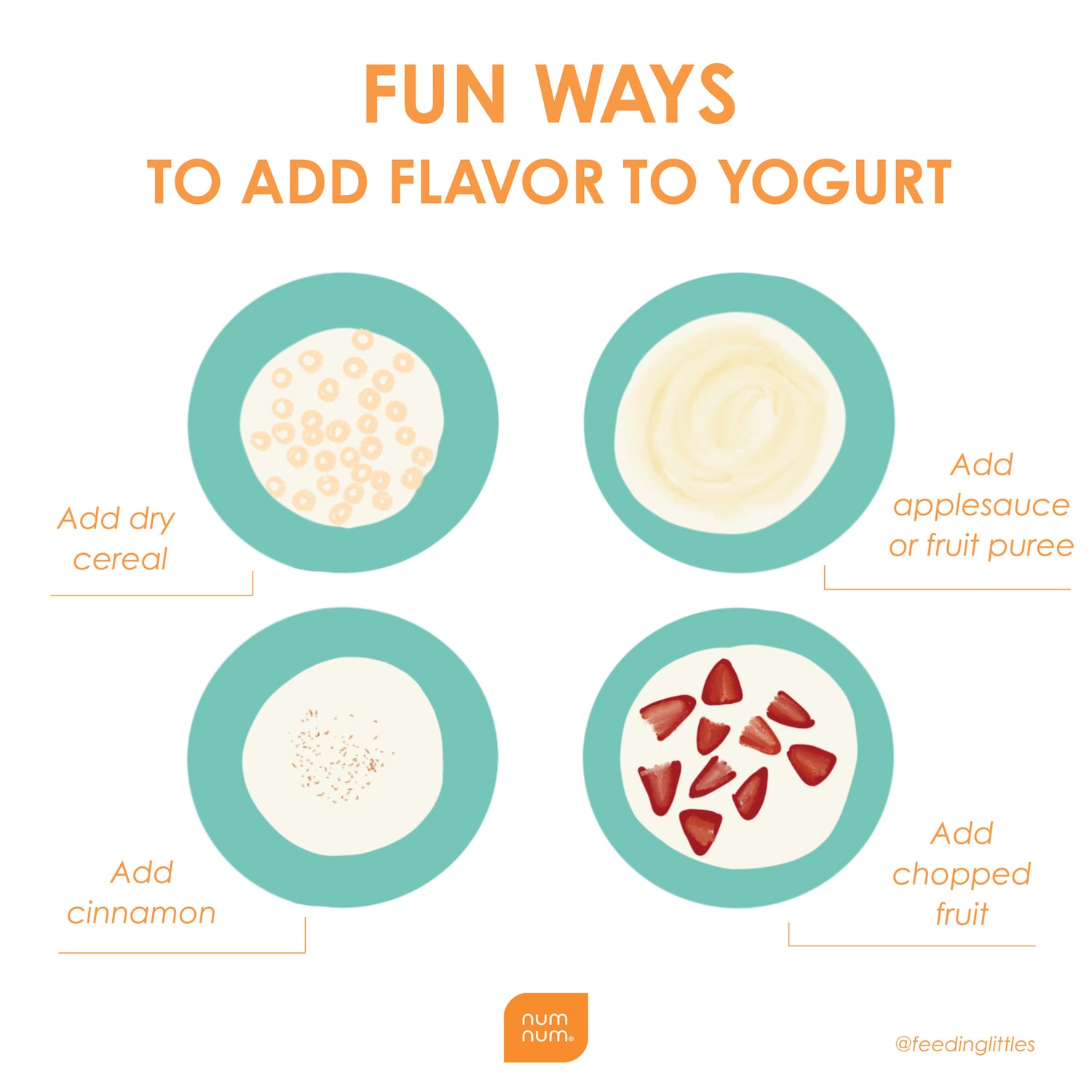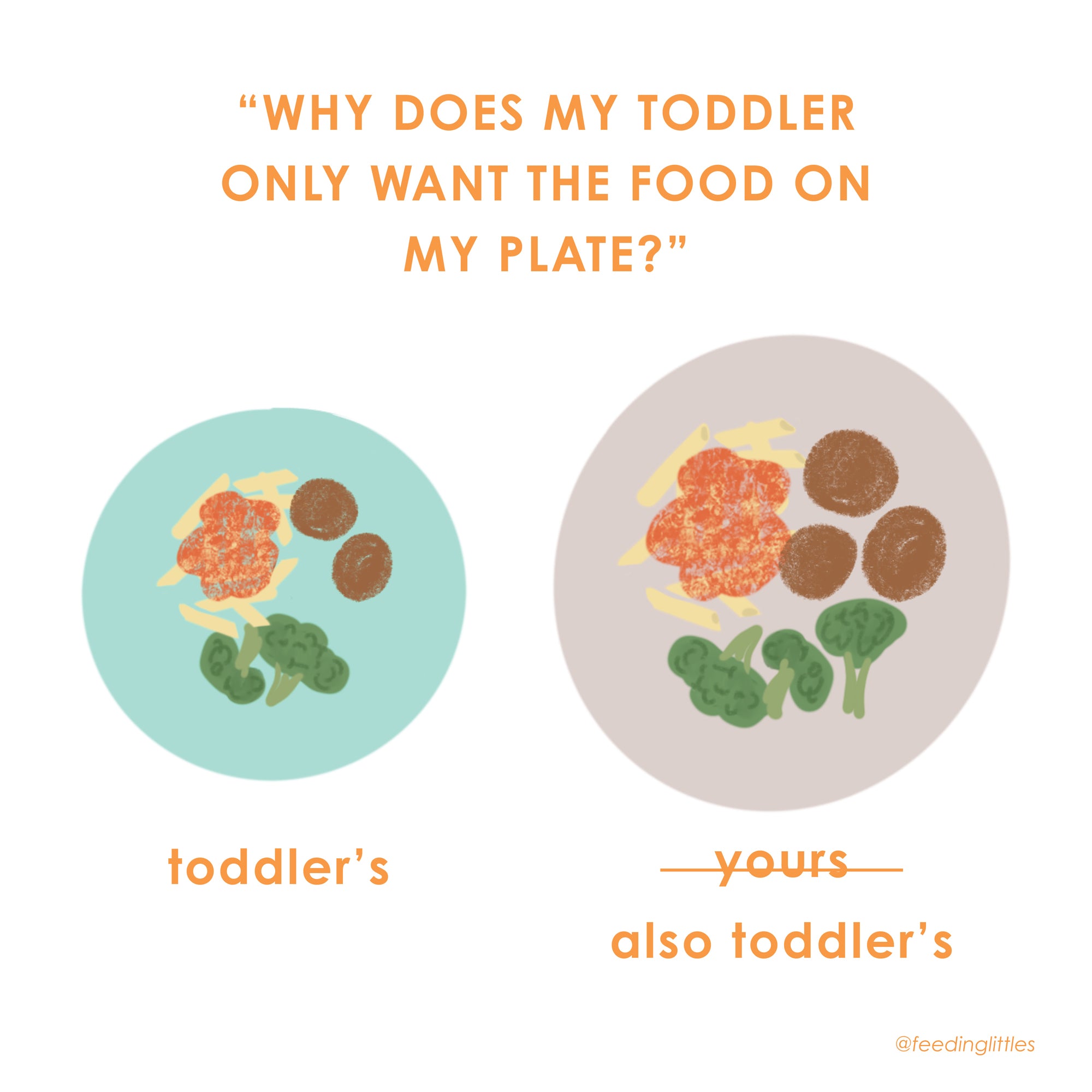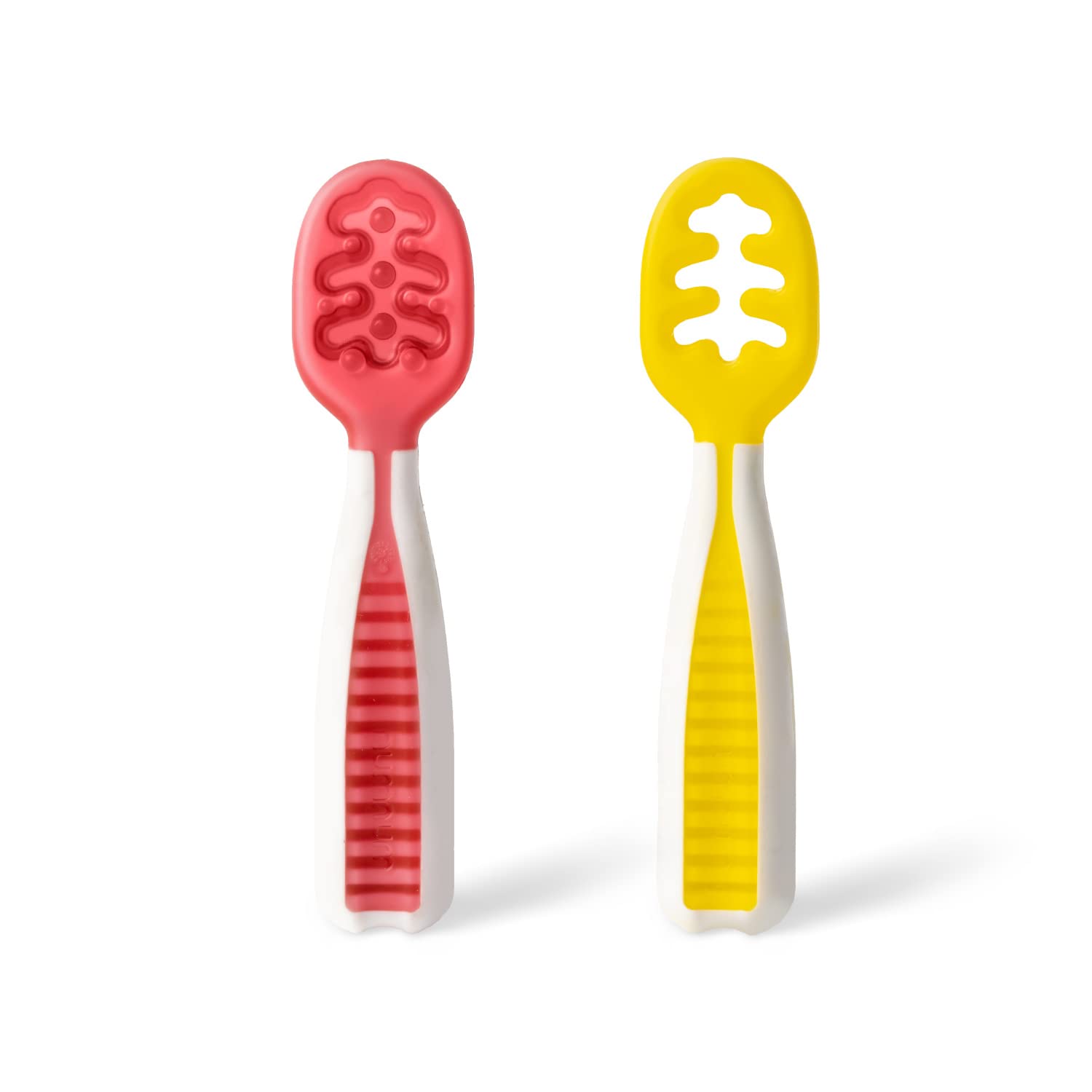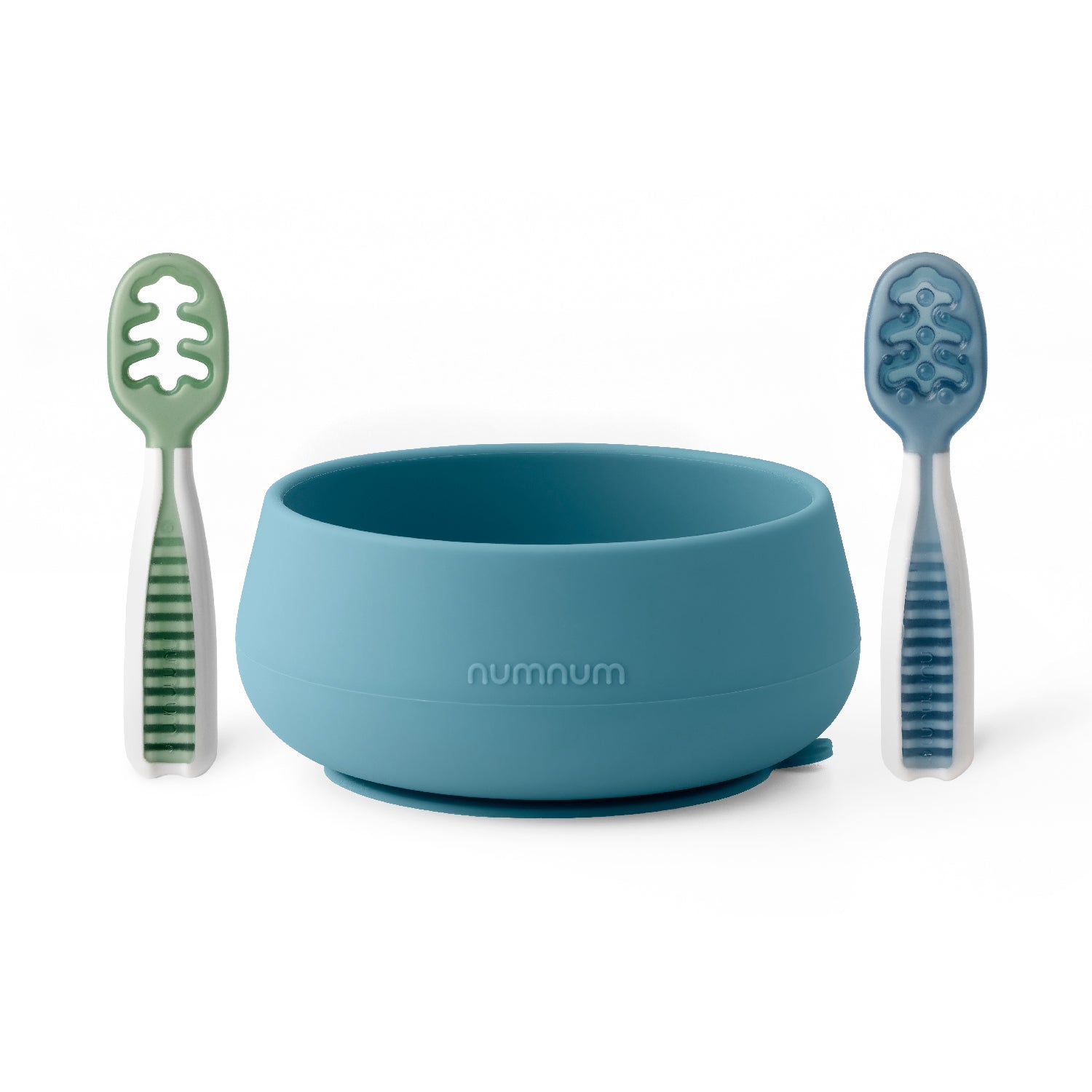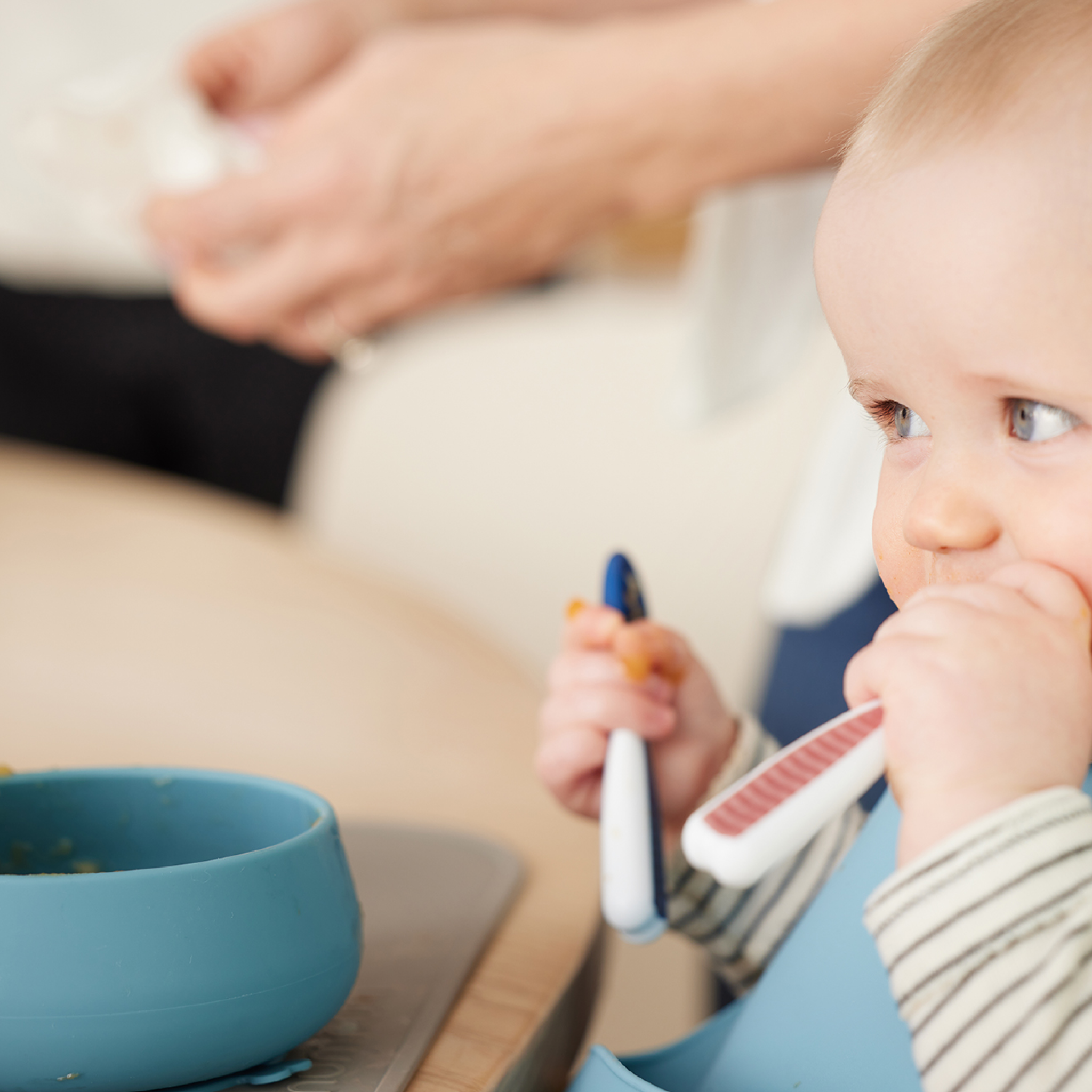We get sooooo many questions about yogurt - below are some answers! 👊 Plus, here are some ways to add some flair to yogurt when you need it.
Yogurt is convenient way to provide calcium, protein and beneficial bacteria (probiotics) to your child’s diet.

But…sometimes it gets a little boring, especially if you have been serving plain/unsweetened yogurt all along. Adding some mix-ins can make it a lot more interesting and can keep your kiddo coming back to the table.
Other ideas:
- chia seeds
- peanut butter
- chocolate chips
- {soft} dried fruit
- freeze-dried fruit
- granola (crush if big pieces, omit whole nuts)
- smashed whole fruit or jelly
What kind of yogurt can I give my baby or toddler? We recommend starting off with full-fat plain yogurt - Greek, traditional or other kinds are fine. Non-dairy yogurt options are available too.
Offer it on a loaded GOOtensil or directly on their tray to promote some sensory play and self-feeding. Once your child gets older, they’ll be able to use a spoon to get it to their own mouth - with a little mess involved, of course 😬
Do I need to buy baby/kid yogurt? You can if you want, but “regular” yogurt is fine too. Baby yogurt is simply full-fat sweetened or unsweetened yogurt in smaller containers.
Can I offer flavored yogurt right away to my baby? Again, up to you - flavored yogurt is generally sweetened, and it’s great for baby to try yogurt that’s not sweetened at 6+ months when they begin food. Many babies really like it this way. You can try some of these add-ins shown if your baby doesn’t like it plain.
I thought babies couldn’t have cow’s milk? We don’t recommend offering fluid cow’s milk to replace your baby’s breast milk or formula until closer to age 1 if you choose to offer cow’s milk. However, other dairy foods are OK and are encouraged at 6+ months because dairy is an allergenic food. If your baby has shown a dairy sensitivity or if their bio parents are allergic to dairy, please work with your provider.

